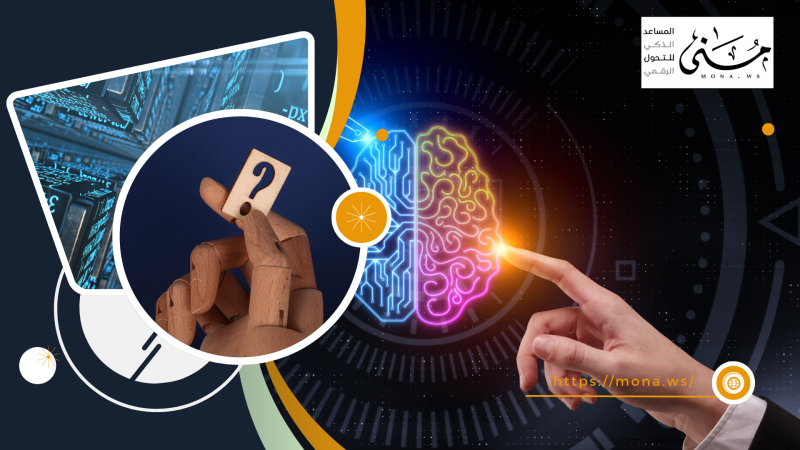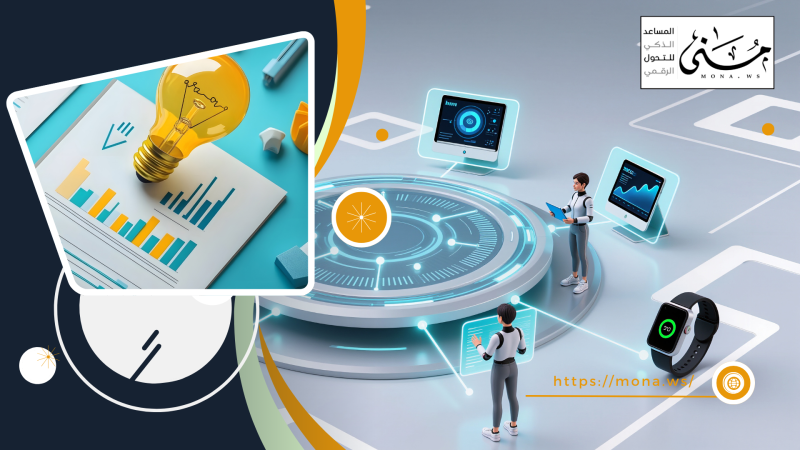In the modern business world, it is no longer enough for organizations to adhere to compliance regulations or simply implement routine operating policies; they must develop advanced mechanisms that enable them to face the unknown with awareness and a clear plan.
This is where the importance of enterprise risk management becomes apparent as a strategic tool that represents the backbone of any sound governance structure. With increasing economic volatility, expanding business relationships, and complex regulations, risk management has become not just a complementary option, but an existential necessity for any organization seeking to sustain its business and protect its decisions from surprises.
Continue reading the article to learn more information.
Enterprise Risk Management Concept
Enterprise Risk Management (ERM) is a systematic framework that aims to identify, analyze, and evaluate everything that could threaten the achievement of an organization's strategic objectives, and then develop effective methods to mitigate or capitalize on its opportunities.
Enterprise risk management differs from traditional risk management in that it is comprehensive and interconnected across all departments of an organization, not limited to just an insurance or legal department. It addresses financial, operational, technological, and even reputational risks in an integrated manner.
Enterprise Risk Management is a gateway to effective governance.
The link between risk management and governance systems does not arise out of nowhere. The fundamental goal of governance is to ensure transparency, control the boundaries of authority, and achieve accountability. Enterprise risk management (ERM) emerges as a practical tool for realizing these principles on the ground, by establishing clear policies to monitor potential threats, documenting procedures for dealing with them, and engaging all stakeholders in monitoring risks on a timely basis.
When an organization successfully implements risk management, it establishes a fair playing field for all employees and departments, reducing the chances of misuse or arbitrary decisions. Decisions are now based on accurate data and analysis, rather than individual judgment or unreliable forecasts.
Risk management helps (ERM) enhances governance by providing a comprehensive framework for identifying, assessing, and managing risks that may impact the achievement of an organization's objectives. By implementing ERM, organizations can:
Identify potential risks
- Identify potential risks that may impact operations and objectives.
- Assessing the impacts of these risks and prioritizing them.
Improve decision making
- Make informed and considered decisions based on risk assessment.
- Allocate resources effectively to address risks.
Promoting transparency and accountability
- Enhancing transparency in risk management by documenting processes and results.
- Enhancing accountability by defining responsibilities and powers.
Improving institutional performance
- Improving corporate performance by reducing losses and risks.
- Enhancing the ability to respond to challenges and opportunities.
In general, enterprise risk management plays a critical role in enhancing governance by providing a comprehensive and integrated framework for risk management, through the application ofWith ERM, organizations can improve decision-making, enhance transparency and accountability, and enhance corporate performance.
Components of an Enterprise Risk Management System
Any integrated risk management framework consists of four main stages, ideally supported by a technical system such as DocSuite ERM to ensure accuracy and speed. The most important components are:
Risk identificationRisk management begins with monitoring all potential sources of threat, whether internal (such as weak internal controls or poor allocation of tasks) or external (such as legislative changes or natural disasters).
Risk analysisAt this stage, the organization assesses the likelihood of each risk occurring and its expected impact. Qualitative and quantitative analysis are used together to formulate a clear priority map.
Risk Response ManagementHere, action plans are determined, whether by avoiding risks, reducing their impact, transferring them (such as insurance), or accepting them if the impact is small.
Continuous monitoring and evaluationThe essence of risk management is continuous updating, because risks are dynamic by nature, so early warning indicators (KRIs) are put in place to measure risks moment by moment.
DocSuite ERM: Digital Enablement for Enterprise Risk Management
Enterprise risk management is no longer a matter of paperwork and scattered meetings. Modern organizations are investing in technology systems like DocSuite ERM, which provides a unified platform for efficiently managing all stages of risk. Through an easy-to-use interface, departments can log new risks, analyze them interactively, track response plans, and generate automatic reports for the board of directors and oversight committees.
DocSuite ERM allows risks to be linked to specific projects, departments, or relevant operational policies, enhancing the coherence of all internal governance elements. It also provides dashboards that display real-time risk indicators, enabling leaders to make proactive decisions.
Tangible Benefits of Enterprise Risk Management
When risk management is adopted professionally and supported by systems like DocSuite ERM, the organization will achieve a series of tangible benefits, most notably:
- Improve the organization's reputation by demonstrating its ability to handle crises.
- Facilitate compliance with international standards such as ISO 31000 or the COSO framework.
- Enhancing investor and partner confidence through a clear regulatory system.
- Reducing material and human losses resulting from unexpected crises.
- Support decision-making with accurate data and analysis.
Integration with other governance systems
Risk management cannot be viewed in isolation from other elements of governance. It is integrated with asset management, management communications, policies and procedures, and formal meetings, ensuring that all these elements operate in a consistent context that reduces surprises and promotes sustainable performance.
Corporate culture that supports enterprise risk management
One of the most important factors for the success of implementing enterprise risk management is transforming it from mere written procedures into a living culture embraced by all employees at all management levels. Organizations that make enterprise risk management a part of their daily work routines and decisions often succeed in facing crises with greater flexibility and are able to transform potential risks into opportunities for improvement.
To achieve this, ongoing awareness and training programs must be implemented that explain the importance of enterprise risk management to every employee, so that each individual becomes part of the early risk detection system, not just a small team within senior management.
Often, implementing ERM faces internal resistance, especially when it is viewed as a strict control tool or a way to punish wrongdoers. However, a conscious organization understands that spreading awareness that the goal of ERM is to protect everyone and ensure business continuity dispels these fears and turns them into a voluntary commitment. Building an open culture of risk reporting also helps identify problems early and develop innovative solutions before they escalate.
Tools like DocSuite ERM support this culture by providing easy channels for reporting risks and interactive dashboards that clearly communicate risk status, response plans, and follow-up mechanisms to all users, increasing transparency and motivating employees to actively participate.
Successful enterprise risk management therefore requires the integration of policies, technologies, and mindsets, within an organizational culture that believes that predicting and managing risks is not a burden but an investment in the organization's security and sustainable success.
Ultimately, leading organizations realize that building sound governance structures cannot be achieved without an integrated enterprise risk management framework. With the complexity of operational environments and the multiplicity of stakeholders, enterprise risk management becomes the cornerstone for protecting the organization and ensuring its sustainability. Therefore, investing in technology solutions such asDocSuite ERM is no longer a luxury, but a necessary step for every organization striving for strong governance, sound decision-making, and sustainable growth.
 تعرف في هذا المقال على كيف تساعد إدارة المخاطر المؤسسية ERM في تعزيز الحوكمة؟
تعرف في هذا المقال على كيف تساعد إدارة المخاطر المؤسسية ERM في تعزيز الحوكمة؟








Comments
Add New Comment